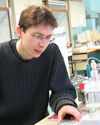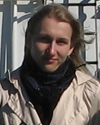
Estimation of measurement uncertainty in chemical analysis
Course introduction
Course introduction
This is an introductory course on estimation of measurement uncertainty, specifically related to chemical analysis (analytical chemistry). The course gives the main concepts and mathematical apparatus of measurement uncertainty estimation and introduces two principal approaches to measurement uncertainty estimation – the ISO GUM modeling approach (the “bottom-up” or modeling approach) and the single-lab validation approach as implemented by Nordtest (the “top-down” or Nordtest approach). The course contains lectures, practical exercises and numerous tests for self-testing.
Course introduction
http://www.uttv.ee/naita?id=17710
https://www.youtube.com/watch?v=r34Y-gzf62Y
In spite of being introductory, the course intends to offer sufficient knowledge and skills for carrying out uncertainty estimation for most of the common chemical analyses in routine laboratory environment. The techniques for which there are examples or exercises include acid-base titration, Kjeldahl nitrogen determination, UV-Vis spectrophotometry, atomic absorption spectroscopy and liquid chromatography mass spectrometry (LC-MS). It is important to stress, however, that for successful measurement uncertainty estimation experience (both in analytical chemistry as such and also in uncertainty estimation) is crucial and this can be acquired only through practice.
The materials of this course can also be useful for people who do not intend to follow the full course but only want to find answers to some specific questions.
This course has been described in the paper: I. Leito, I. Helm, L. Jalukse. Using MOOCs for teaching analytical chemistry: experience at University of Tartu. Anal. Bioanal. Chem. 2015, DOI: 10.1007/s00216-014-8399-y.
On May 11, 2023 the 10th edition of the course finished successfully. Altogether 993 people registered from 99 countries. 523 participants actually started the course (i.e. tried at least one graded test at least once) and out of them 333 successfully completed the course. The overall completion rate was 34%. The completion rate of participants who actually started the studies was 64%. (Some more statistics).
You can have a preview of the MOOC in Moodle environment as a guest. Guest access allows you to view the course contents, but you cannot read the forums and take quizzes.
Required preliminary knowledge
Introductory level knowledge of analytical chemistry is required. More advanced knowledge of analytical chemistry and introductory knowledge of mathematical statistics is an advantage. Fluency with and access to a spreadsheet software package (MS Excel, OpeOffice, etc) is highly recommended.
Why is measurement uncertainty important
http://www.uttv.ee/naita?id=17711
https://www.youtube.com/watch?v=tn2DLYA72Dk
Study outcomes
The student who has successfully passed the course knows:
- the main concepts related to measurement results and measurement uncertainty, including their application to chemical analysis;
- the main mathematical concepts and tools in uncertainty estimation;
- the main measurement uncertainty sources in chemical analysis;
- the main approaches for measurement uncertainty estimation.
The student who has successfully passed the course is able to:
- decide what data are needed for uncertainty estimation, understand the meaning of the available data and decide whether the available data are sufficient;
- select the uncertainty estimation approach suitable for the available data;
- quantify the uncertainty contributions of the relevant uncertainty sources using the available data;
- carry out estimation of uncertainty using the main approaches of uncertainty estimation.
Organization of the course material
The course (overall volume 1 ECTS) is organized in 12 sections, of which some are in turn split into smaller subsections. The following parts are found in the sections:
- The sections (and also many subsection) start with a brief introduction stating the main topic(s) and study outcomes of the section.
- The main topic of the respective section is explained in a short video lecture.
- The lecture is followed by a textual part. This text is in most cases meant to complement, not substitute the lecture (although in some cases the contents of the lecture are also repeated in some extent). It rather gives additional explanations and addresses some additional topics that were not covered by the lecture.
- Most sections end with a self-test, which enables to test the acquired knowledge and skills. The tests contain questions, as well as calculation problems. The self-tests are on one hand meant for the students to monitor his/her progress. On the other hand, however, they also promote thinking and provide (by the feedback of the questions) additional knowledge about measurement uncertainty estimation in different practical situations. So, the self-tests are an intrinsic component of the course and it is strongly recommended to take all of them.
The printout of the current version of the course materials (including lecture slides) can be downloaded from here.
If you consistently get a message “Server not found” when attempting to watch videos then with high probability the reason is the firewall of your local network. The local network administrators should enable outcoming connections from your network via port 1935. More specifically it is necessary to access the server rtmp://flash.ut.ee:1935.
An additional possibility is to watch the videos in YouTube via channel “ESTIMATION OF MEASUREMENT UNCERTAINTY IN CHEMICAL ANALYSIS”.
Direct link: https://www.youtube.com/channel/UCeNhxB_WuTDNcbNHFxsBjUw
Self-testing
Throughout the course there are numerous self-tests for enabling the student to test his/her knowledge and skills in specific topics. Each test is graded as a percentage (100% corresponding to correctly answering all questions and correctly solving all problems).
Feedback is given as:
![]() Correct answer, correctly recognised and marked by the student.
Correct answer, correctly recognised and marked by the student.
![]() Incorrect answer, however, considered correct by the student.
Incorrect answer, however, considered correct by the student.
Explanatory feedback is displayed when wrong answer is selected. All self-tests can be taken as many times as needed and the success of taking self-tests will not influence the final grade. We recommend that you take all the self-tests and work with them until you achieve score 100% and only then move to next topic.
Course organization
During the six-week course period the work will be organized using the Moodle online environment. For every week a set of tasks will be given – which sections of the material should be studied and which self-tests/exercises should be passed at https://sisu.ut.ee/measurement/uncertainty. The self-tests can be taken unlimited number of times (preferably, until the answers/solutions are fully correct) and their outcomes will not influence the final grade. At the end of each week there will be a graded interim test (in the Moodle environment), which will be counted for assigning the final grade. The participants can choose themselves how they spend their time during the course, because all graded tests are available from the beginning of the course until the end of the course. This enables them to organize their time the way that is best suitable for them. Please note, however, that the difficulty level of the tests increases as the course progresses: tests 3-4 are more difficult than 1-2 and tests 5-6 are still more difficult. Because of the higher difficulty level it may be a good idea you might have to plan more time for the last weeks of the course. How much time it takes for passing the course, is very individual, but we estimate that an average participant needs 3-4 h per week.
Terminology and definitions
Wherever possible, the used terminology adheres to the 3rd edition of the International vocabulary of metrology — Basic and general concepts and associated terms (VIM), [1] referred to as “VIM” throughout the course. However, in the interest of better understanding and in order to stress the most important aspects of concepts, in many cases concepts are introduced by definitions that are somewhat simplified compared to the VIM. More deeply interested students are encouraged to consult the VIM.
If you would like to learn more …
This course is part of the Excellence in Analytical Chemistry (https://www.analyticalchemistry.eu/) Erasmus Mundus master’s programme, which offers education in all aspects of Analytical chemistry, including metrology in chemistry (measurement uncertainty, method validation, reference materials, etc), as well as economic and legal aspects of chemical analysis.
This course is run within the framework of the Estonian Center of Analytical Chemistry with the aim of offering easily accessible knowledge in analytical chemistry to labs and industries in Estonia and elsewhere.
Main literature sources [2]
- (1) JCGM 200:2012, International vocabulary of metrology — Basic and general concepts and associated terms (VIM), 3rd edition. BIPM, IEC, IFCC, ILAC, ISO, IUPAC, IUPAP and OIML, 2012. Available on-line from http://www.bipm.org/en/publications/guides/vim.html
- (2) JCGM 100:2008 Evaluation of measurement data — Guide to the expression of uncertainty in measurement. JCGM, 2008. Available on-line from http://www.bipm.org/en/publications/guides/gum.html
- (3) Quantifying Uncertainty in Analytical Measurement, 3rd ed.; Ellison, S. L. R.; Williams, A., Eds.; EURACHEM/CITAC, 2012. Available on-line from http://eurachem.org/index.php/publications/guides
- (4) Measurement Uncertainty Revisited. Eurolab Technical Report No 1/2007. Eurolab, 2007. Available on-line from https://eurolab-d.de/files/measurement_uncertainty_revisited_-_alternative_approaches_to_uncertainty_evaluation.pdf
- (5) Handbook for Calculation of Measurement Uncertainty in Environmental Laboratories. B. Magnusson, T. Näykki, H. Hovind, M. Krysell, E. Sahlin. Nordtest technical report 537, ed. 4.0. Nordtest, 2017. Available on-line from http://www.nordtest.info/wp/2017/11/29/handbook-for-calculation-of-measurement-uncertainty-in-environmental-laboratories-nt-tr-537-edition-4/
- (6) Joint Research Centre, Institute for Reference Materials and Measurements, Bulska, E., Papadakis, I., Taylor, P., et al., Analytical measurement : measurement uncertainty and statistics, Gegevičius, V. (editor), Majcen, N. (editor), Publications Office, 2013, https://data.europa.eu/doi/10.2787/58527
Course team
 Ivo Leito, professor of analytical chemistry at University of Tartu.
Ivo Leito, professor of analytical chemistry at University of Tartu.
Ivo teaches analytical chemistry and metrology in chemistry at all study levels and organizes short training courses for practitioners on different topics of analytical chemistry and metrology in chemistry. His research work embraces a wide area of topics ranging from studies of superacids and superbases to LC-MS analysis. He is the initiator of the master’s programme Applied Measurement Science at University of Tartu.
 Lauri Jalukse, research fellow in analytical chemistry at University of Tartu.
Lauri Jalukse, research fellow in analytical chemistry at University of Tartu.
Lauri teaches analytical chemistry and metrology in chemistry at all study levels. He is continuously introducing innovative and active learning approaches into teaching. His research work is focused on metrological studies of electrochemical and optical sensors, measurements of dissolved oxygen concentration and moisture content, as well as organization of interlaboratory comparisons.
 Irja Helm, research fellow in analytical chemistry at University of Tartu.
Irja Helm, research fellow in analytical chemistry at University of Tartu.
Irja teaches practical classes of analytical chemistry. She takes care that metrological concepts and approaches are introduced to students at as early stage of analytical chemistry studies as possible.
Technical design: Educational Technology Centre, University of Tartu.
Contact and feedback
Ivo Leito
University of Tartu
Institute of Chemistry
Ravila 14a, Tartu 50411
ESTONIA
Tel: +372-5 184 176
e-mail: ivo.leito@ut.ee
Skype: leitoivo
Copyright
This learning object is protected by copyright under the copyright law of the Republic of Estonia. Proprietary rights belong to the University of Tartu. It is allowed to reproduce, distribute and perform the learning object in public only for learning and teaching. The learning object can be used only as a whole, except in the case of citation. The learning object cannot be used for commercial purposes and all usage has to be accompanied by a sufficient acknowledgement. It is not allowed to modify or make an adaptation of the learning object.
***
[1] JCGM 200:2012, International vocabulary of metrology — Basic and general concepts and associated terms (VIM), 3rd edition. BIPM, IEC, IFCC, ILAC, ISO, IUPAC, IUPAP and OIML, 2012. Available on-line from http://www.bipm.org/en/publications/guides/vim.html
[2] This list of literature references is selecive, not exhauxtive. The references were selected based on the following criteria: (1) Widely used and cited; (2) useful under practical lab conditions (i.e. not too deeply scientific); (3) a fairly recent version is available and (4) the document is preferably available free of charge on the Internet. These references are referred to in the course via superscript numbers in round brackets, e.g.: VIM(1).


